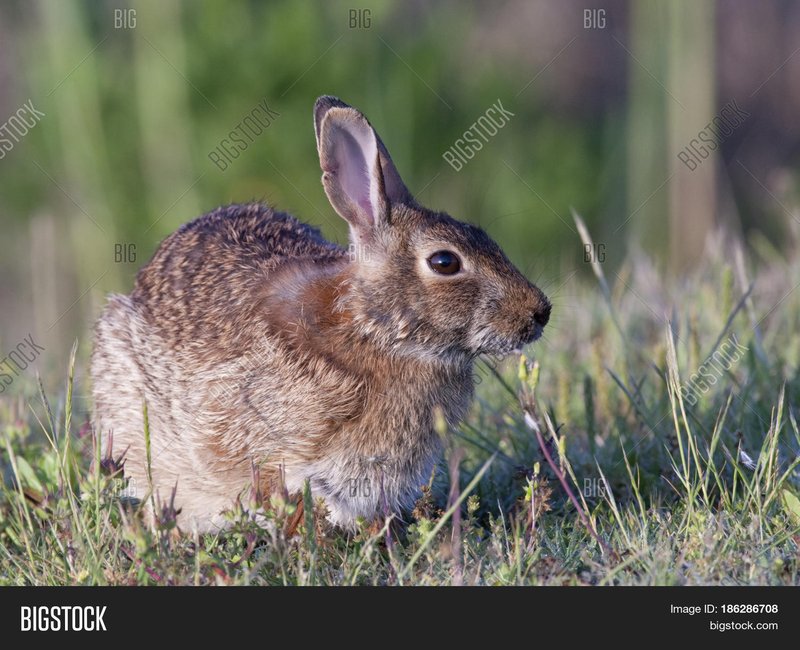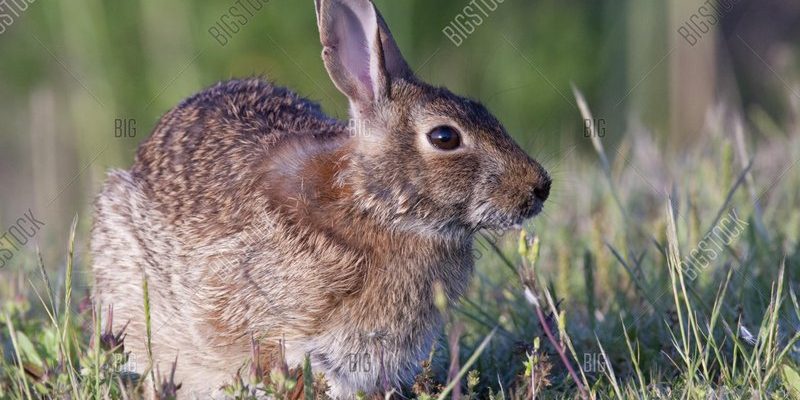
The Eastern Cottontail is one of the most recognizable and beloved rabbits in North America. With its soft fur, long ears, and the signature cotton-like tail, this little creature hops right into our hearts. Imagine a fluffy ball of energy darting across a field, stopping every so often to nibble on some grass or to perk up and listen for any signs of danger. That’s the Eastern Cottontail for you, a lively character that plays a significant role in its ecosystem.
You might be wondering what makes these rabbits so special. Let’s start with their behavior. Eastern Cottontails are known for their agility and speed, traits that have been finely honed to escape predators. They are mostly nocturnal, which means you’ll often hear them rustling in the underbrush as twilight falls. In fact, they can be quite social, living in groups in areas rich with food and cover. There’s truly more to these little bunnies than meets the eye, and their charm extends beyond their fluffy appearance.
Physical Characteristics
Eastern Cottontails are medium-sized rabbits, typically weighing between 2 to 4.5 pounds and measuring about 15 to 20 inches in length, not counting their tail. Their coats are mostly brown or gray with a hint of red, which helps them blend into their environment. The small, fluffy tail – the “cottontail” – is a key identifying feature, appearing almost like a pom-pom. Their ears, long and alert, serve as vital tools for detecting predators, swiveling to catch any sound that might indicate danger.
What’s interesting is how their coloration changes with the seasons. In winter, their fur may shift to a lighter shade, helping them to remain concealed against the snow. It’s a clever adaptation that enhances their survival. Additionally, their strong hind legs are built for quick escapes. When startled, these rabbits can leap up to 10 feet in a single bound! It’s this mix of physical traits that makes the Eastern Cottontail both a delightful sight and a master of survival.
Habitat Preferences
The Eastern Cottontail thrives in a variety of habitats. They prefer areas with thick brush, fields, and gardens where they can find plenty of food. You might spot them in open woodlands or even in suburban backyards, where they have become quite at home. Habitat is not just about food, though; these rabbits also need shelter to hide from predators such as hawks and foxes. Dense shrubs and tall grasses provide both food and protection.
When choosing a home, these rabbits look for spaces that have both cover and abundant foraging opportunities. Their nests, which are simply shallow depressions in the ground lined with grass and fur, are often hidden in dense vegetation. You could say their homes are like secret hideouts, perfectly camouflaged against prying eyes. Understanding their habitat is crucial for anyone interested in wildlife or gardening, as creating a friendly environment can attract them to your yard.
Dietary Habits
Eastern Cottontails are herbivores, which means their diet consists solely of plant material. They enjoy a variety of foods, including grasses, clovers, and leaves. In the spring and summer months, you might find them munching on tender shoots and the lush green foliage that comes with warmer weather. In winter, their diet shifts toward bark, twigs, and dried herbs as fresh greens become scarce. It’s almost like they have a seasonal menu!
This dietary versatility not only enriches their lives but also plays a role in maintaining the balance of their ecosystems. By eating grass and plants, they help control growth, allowing a diverse range of flora to thrive. You might be surprised to learn that they can consume up to 2 pounds of food per day! This high intake is necessary to maintain their energy levels for their active lifestyles, and it’s fascinating to think about the amount of plant material they cycle through their habitats.
Behavior and Social Structure
In terms of behavior, Eastern Cottontails are generally solitary but can also be found in small groups. Their social structures can vary based on food availability and habitat. During the breeding season, which typically peaks in spring, males may be seen chasing females as they compete for mates. It’s an active time, full of playful behavior, and you might notice them engaging in gentle sparring to establish dominance.
These rabbits communicate through a variety of sounds and body language. They may thump their hind legs to signal alarm to other rabbits nearby, or they might hop and stretch in a playful manner. Watching them interact can be quite entertaining – they have a playful side that often reminds us of puppies at play. This behavior is not just about fun; it’s essential for bonding and social structure, helping them to navigate their world.
Breeding and Lifespan
The breeding habits of the Eastern Cottontail are quite fascinating. Females can have several litters each year, often producing around 3 to 8 kits per litter. The gestation period is roughly 28 to 32 days, after which the young are born blind and hairless. By two weeks, they start to grow fur and gain sight, and by around three weeks, they’re usually ready to venture outside of the nest. It’s incredible how quickly they grow and adapt!
In the wild, Eastern Cottontails generally live for about 1 to 3 years, although in ideal conditions, some can survive up to 5 years. Their lifespan is often challenged by predators, disease, and environmental hazards. Each year, only a fraction of the young rabbits survive to adulthood, but those that do are vital for maintaining the population and ensuring the continuation of their species. This cycle of life is a reminder of the balance in nature – each Eastern Cottontail plays a role in the larger ecosystem.
Conservation Status
Currently, the conservation status of the Eastern Cottontail is considered stable, but this has not always been the case. Habitat loss due to urban development and agricultural expansion poses a threat to their populations. Efforts are ongoing to preserve their natural habitats and promote environments where wildlife can thrive. Many states have initiatives aiming to maintain green spaces that support these adorable rabbits.
As individuals, we can also contribute to their well-being by creating rabbit-friendly gardens. Incorporating native plants and avoiding pesticides can help make your backyard a safe haven for Eastern Cottontails. Even small changes can create a significant impact, allowing this charming species to flourish while enriching our natural landscapes.
Interesting Facts
| Scientific Name: | Sylvilagus floridanus |
| Average Weight: | 2 – 4.5 pounds |
| Length: | 15 – 20 inches |
| Lifespan: | 1 – 3 years (up to 5 years in ideal conditions) |
| Speed: | Up to 18 mph |
| Diet: | Herbivorous; primarily grasses and greens |
| Habitat: | Fields, woodlands, gardens |
FAQ
Where can I find Eastern Cottontails?
Eastern Cottontails can be found throughout the eastern United States and parts of Canada and Mexico. They thrive in diverse habitats, including fields, gardens, and woodlands. If you’re in these regions, keep an eye out during the early morning or late evening, as that’s when they are most active.
What do Eastern Cottontails do in the winter?
During winter, Eastern Cottontails adapt to colder conditions by changing their diet to include bark, twigs, and dried herbs. They also rely on their burrows or nests for warmth and protection from the cold. While they may not hibernate, they become less active and conserve energy during extremely cold spells.
Are Eastern Cottontails good pets?
While Eastern Cottontails are adorable, they are wild animals and not suitable as domestic pets. They have specific needs, behaviors, and instincts that don’t align well with captivity. If you’re considering a rabbit as a pet, it’s best to look into domestic breeds specifically bred for companionship.
How can I help Eastern Cottontails in my area?
Creating a friendly environment is a great way to assist Eastern Cottontails. Planting native flowers and grasses, avoiding pesticide use, and providing shelter in your garden or yard can make it a welcoming space for them. Additionally, supporting local conservation efforts can help maintain their habitats.
What’s the difference between Eastern Cottontails and other rabbit species?
Eastern Cottontails are distinguishable by their distinctive coloration, size, and habitat preferences compared to other species, such as the Western Cottontail. They also have different behavior patterns and diets based on their environments. Each species has adapted uniquely to its surroundings, showing the diversity within the rabbit family.
Do Eastern Cottontails make sounds?
Yes! Eastern Cottontails communicate using various sounds. They may grunt, growl, or even thump their hind legs to signal alarm to other rabbits. These vocalizations and body movements play an important role in their social interactions and survival strategies.
What predators do Eastern Cottontails face?
Eastern Cottontails have several natural predators, including hawks, foxes, and domestic cats. Being aware of their surroundings and utilizing their speed and agility are crucial for their survival. These rabbits are always on alert, ready to use their strong legs to escape quickly from danger.
Can I create a habitat for Eastern Cottontails in my backyard?
Absolutely! To create a habitat, incorporate native plants for food, avoid using harmful chemicals, and provide areas of dense cover for shelter. This approach will not only support Eastern Cottontails but also enhance the biodiversity of your garden.
How often do Eastern Cottontails breed?
Eastern Cottontails can breed several times throughout the warmer seasons. In one year, a female can produce up to five litters, with each litter consisting of several kits. This high reproductive rate is essential for maintaining their population in the wild.
Are Eastern Cottontails nocturnal or diurnal?
Eastern Cottontails are primarily crepuscular, which means they are most active during dawn and dusk. This behavior helps them avoid many predators that hunt during the day or night. Observing them during these times can be a delightful experience as they forage and play.

